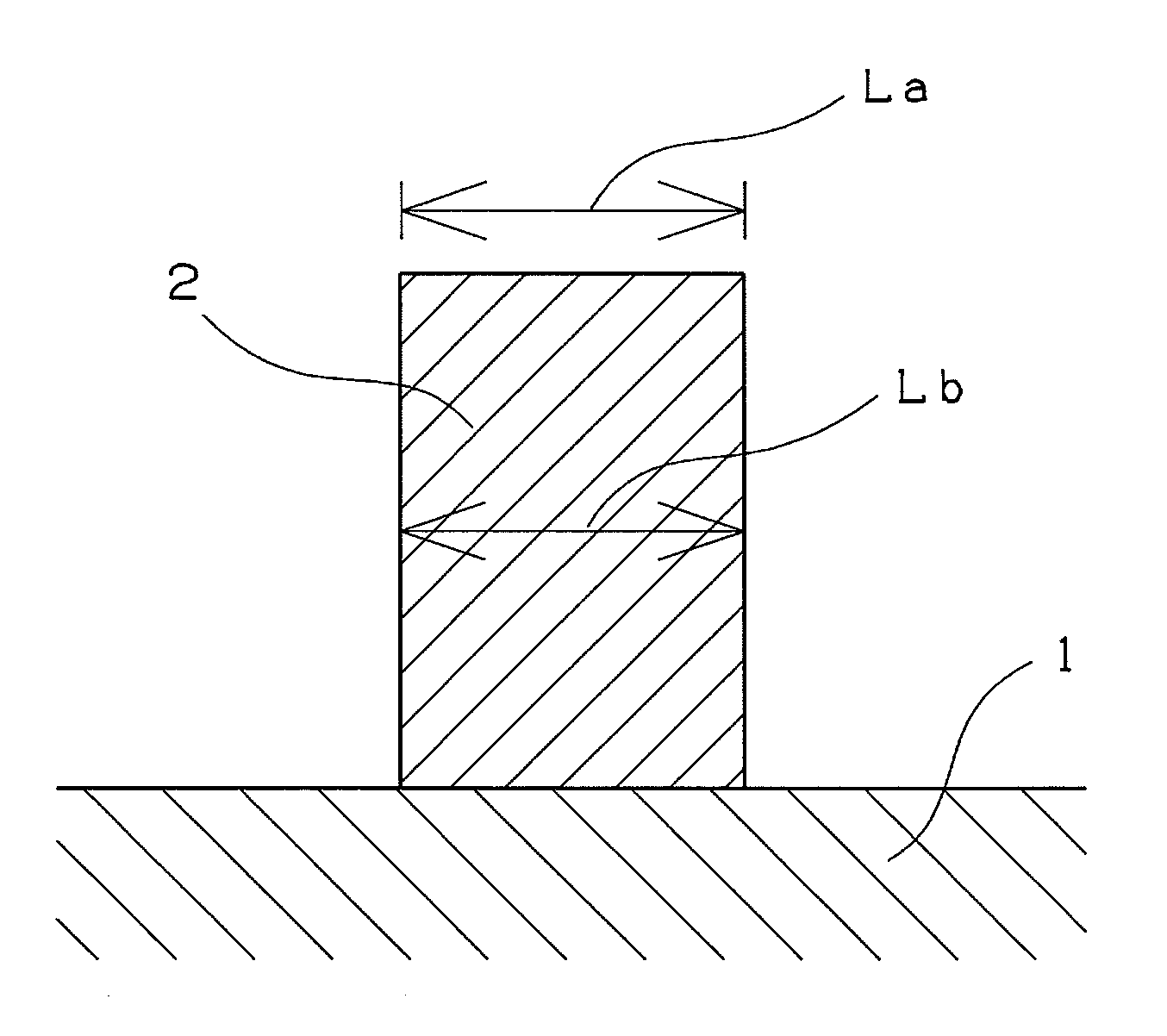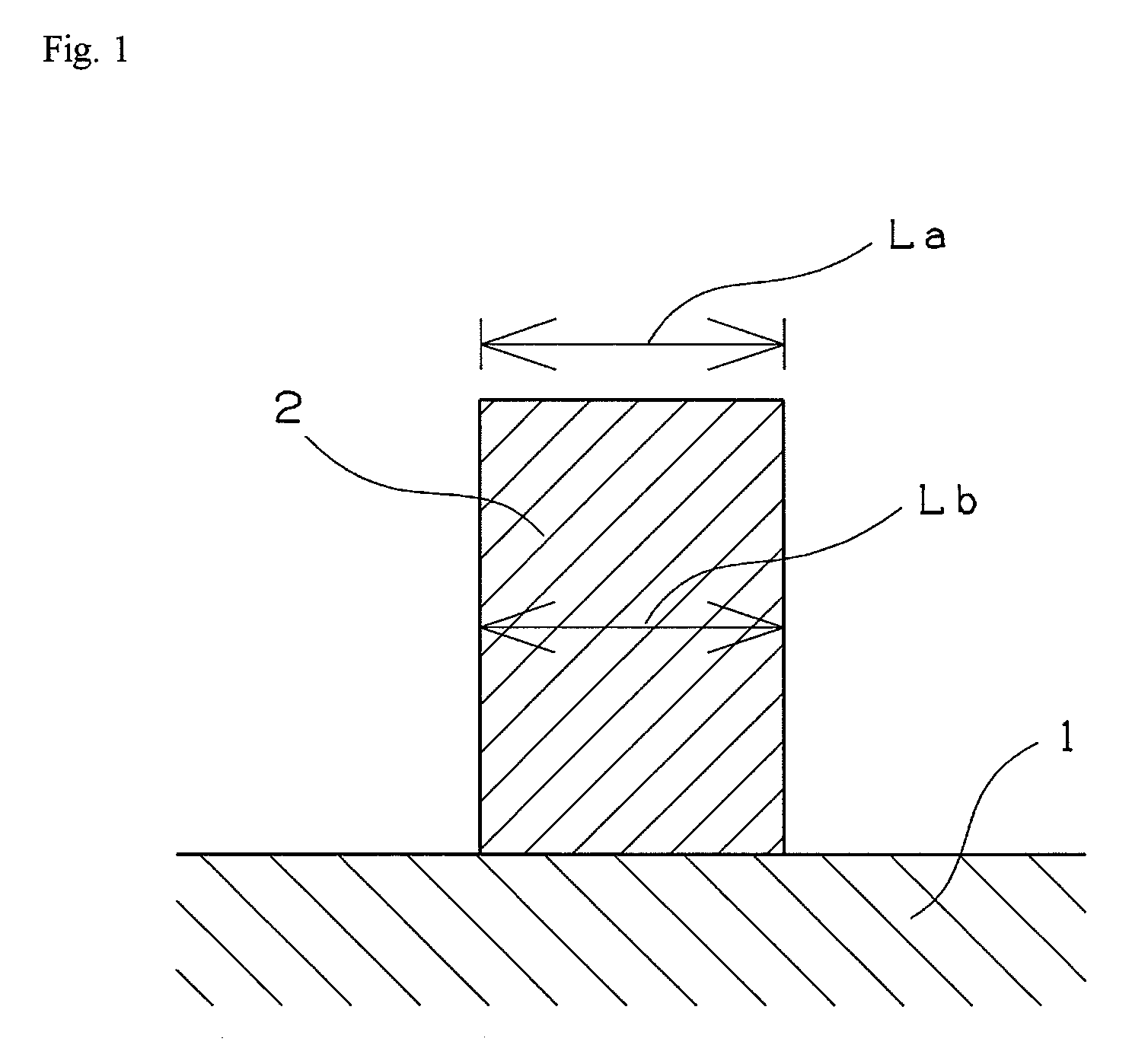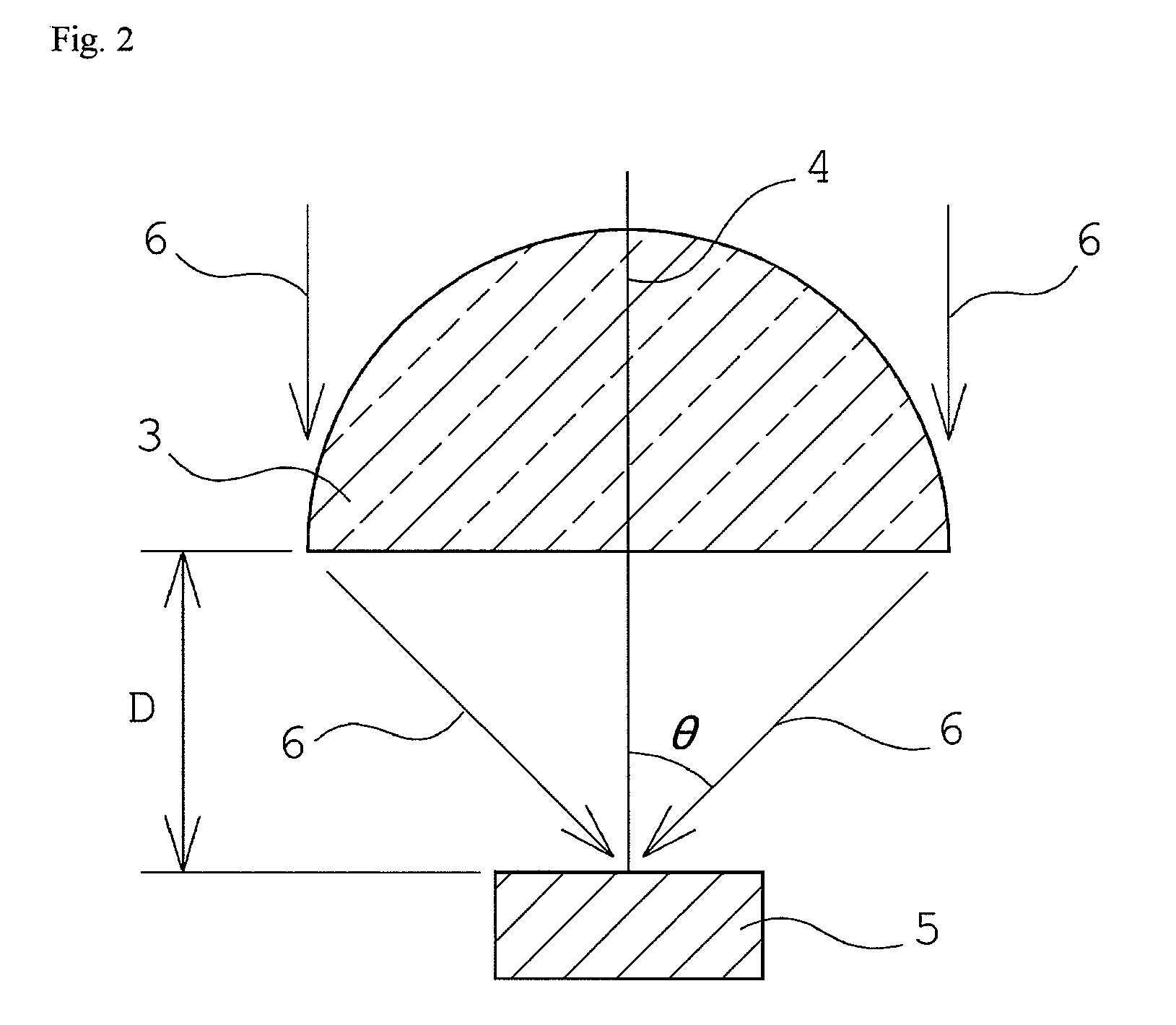Compound, polymer, and radiation-sensitive composition
a technology of compound and resin, applied in the field of compound and polymer, can solve the problems of reducing the resolution of photoresist, pollution of the lens surface with such a photoresist component, and elution of a photoresist component, and achieves the effects of improving ler, limiting the dispersion range, and high resolution
- Summary
- Abstract
- Description
- Claims
- Application Information
AI Technical Summary
Benefits of technology
Problems solved by technology
Method used
Image
Examples
examples
[0191]The present invention is described below in more detail by examples. However, these examples should not be construed as limiting the present invention. In the examples, “part” refers to “part by weight” unless otherwise indicated.
[0192]Measurement and evaluation in Examples and Comparative Examples were carried out according to the following procedures.
Mw:
[0193]The weight average molecular weight of polymers (A-1), (A-2), (A-21), (A-22), and (R-3) were measured on a polystyrene-reduced basis, using GPC columns (manufactured by Tosoh Corp., G2000HXL×2, G3000HXL×1, G4000HXL×1) under the following conditions. flow rate: 1.0 ml / minute, eluate: tetrahydrofuran, column temperature: 40° C., standard reference material: monodispersed polystyrene
[0194]The polymers (A-3) to (A-20), (R-1), and (R-2) were detected using a MALLS detector, and Mw was measured by gel permeation chromatography (GPC) using a GPC column (TSK gel α-2500 and TSK gel α-M manufactured by Tosoh Corp.) under the foll...
example 1
[0215]A compound shown by the formula (1-1) was synthesized by the following method.
[0216]
[0217]100 g of vinyl sulfonic acid and 50 g of triphenylsulfonium bromide were dissolved in water and the solution was stirred at room temperature for one hour. After evaporating water under reduced pressure, the residue was extracted with 300 g of methanol. The methanol was evaporated from the resulting methanol solution under reduced pressure to produce 51 g of triphenylsulfonium vinyl sulfonic acid (1-1). The compound was analyzed by 1H-NMR spectrum (JNM-EX270, manufactured by JEOL Ltd.) using deuterated chloroform as a solvent to show that the chemical shift was as follows, confirming that the compound was the target compound.
[0218]1H-NMR σ ppm (CD3Cl): 6.25 (1H, d), 6.51 (1H, d), 6.88 (1H, dd), 7.26-7.78 (15H, m, Ph)
[0219]In addition, the compound was analyzed using a mass spectrometer (“JMS-AX505W” manufactured by JEOL Ltd.). A parent ion peak of 263 was detected to confirm that the compo...
example 2
[0221]A compound shown by the formula (2-3) was synthesized by the following method.
[0222]
[0223]200 g of a compound (m01) was added to 331 g of formic acid and the mixture was stirred for 8 hours while refluxing under a nitrogen atmosphere. After the reaction, the reaction mixed solution was cooled to room temperature. Unreacted formic acid was evaporated under reduced pressure and 500 ml of ethyl acetate was added. The ethyl acetate solution was washed three times with 300 ml of a 5% aqueous solution of sodium hydrogencarbonate and washed three times with 300 ml of water. The ethyl acetate solution was dried using anhydrous magnesium sulfate. Ethyl acetate was evaporated under reduced pressure to produce a compound (m02) (amount: 230 g, yield: 98%). The compound (m02) was used in the next step as is.
[0224]230 g of the compound (m02) was dissolved in 1,500 ml of methanol. After adding 153 g of potassium carbonates, the mixture was stirred at a room temperature for two hours. After t...
PUM
| Property | Measurement | Unit |
|---|---|---|
| width | aaaaa | aaaaa |
| width | aaaaa | aaaaa |
| width | aaaaa | aaaaa |
Abstract
Description
Claims
Application Information
 Login to View More
Login to View More - R&D
- Intellectual Property
- Life Sciences
- Materials
- Tech Scout
- Unparalleled Data Quality
- Higher Quality Content
- 60% Fewer Hallucinations
Browse by: Latest US Patents, China's latest patents, Technical Efficacy Thesaurus, Application Domain, Technology Topic, Popular Technical Reports.
© 2025 PatSnap. All rights reserved.Legal|Privacy policy|Modern Slavery Act Transparency Statement|Sitemap|About US| Contact US: help@patsnap.com



